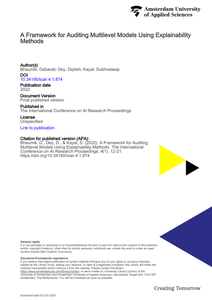ObjectiveTo compare estimates of effect and variability resulting from standard linear regression analysis and hierarchical multilevel analysis with cross-classified multilevel analysis under various scenarios.Study design and settingWe performed a simulation study based on a data structure from an observational study in clinical mental health care. We used a Markov chain Monte Carlo approach to simulate 18 scenarios, varying sample sizes, cluster sizes, effect sizes and between group variances. For each scenario, we performed standard linear regression, multilevel regression with random intercept on patient level, multilevel regression with random intercept on nursing team level and cross-classified multilevel analysis.ResultsApplying cross-classified multilevel analyses had negligible influence on the effect estimates. However, ignoring cross-classification led to underestimation of the standard errors of the covariates at the two cross-classified levels and to invalidly narrow confidence intervals. This may lead to incorrect statistical inference. Varying sample size, cluster size, effect size and variance had no meaningful influence on these findings.ConclusionIn case of cross-classified data structures, the use of a cross-classified multilevel model helps estimating valid precision of effects, and thereby, support correct inferences.
MULTIFILE

Multilevel models (MLMs) are increasingly deployed in industry across different functions. Applications usually result in binary classification within groups or hierarchies based on a set of input features. For transparent and ethical applications of such models, sound audit frameworks need to be developed. In this paper, an audit framework for technical assessment of regression MLMs is proposed. The focus is on three aspects: model, discrimination, and transparency & explainability. These aspects are subsequently divided into sub-aspects. Contributors, such as inter MLM-group fairness, feature contribution order, and aggregated feature contribution, are identified for each of these sub-aspects. To measure the performance of the contributors, the framework proposes a shortlist of KPIs, among others, intergroup individual fairness (DiffInd_MLM) across MLM-groups, probability unexplained (PUX) and percentage of incorrect feature signs (POIFS). A traffic light risk assessment method is furthermore coupled to these KPIs. For assessing transparency & explainability, different explainability methods (SHAP and LIME) are used, which are compared with a model intrinsic method using quantitative methods and machine learning modelling.Using an open-source dataset, a model is trained and tested and the KPIs are computed. It is demonstrated that popular explainability methods, such as SHAP and LIME, underperform in accuracy when interpreting these models. They fail to predict the order of feature importance, the magnitudes, and occasionally even the nature of the feature contribution (negative versus positive contribution on the outcome). For other contributors, such as group fairness and their associated KPIs, similar analysis and calculations have been performed with the aim of adding profundity to the proposed audit framework. The framework is expected to assist regulatory bodies in performing conformity assessments of AI systems using multilevel binomial classification models at businesses. It will also benefit providers, users, and assessment bodies, as defined in the European Commission’s proposed Regulation on Artificial Intelligence, when deploying AI-systems such as MLMs, to be future-proof and aligned with the regulation.
DOCUMENT

The article engages with the recent studies on multilevel regulation. The starting point for the argument is that contemporary multilevel regulation—as most other studies of (postnational) rulemaking—is limited in its analysis. The limitation concerns its monocentric approach that, in turn, deepens the social illegitimacy of contemporary multilevel regulation. The monocentric approach means that the study of multilevel regulation originates in the discussions on the foundation of modern States instead of returning to the origins of rules before the nation State was even created, which is where the actual social capital underlying (contemporary) rules can be found, or so I wish to argue. My aim in this article is to reframe the debate. I argue that we have an enormous reservoir of history, practices, and ideas ready to help us think through contemporary (social) legitimacy problems in multilevel regulation: namely all those practices which preceded the capture of law by the modern State system, such as historical alternative dispute resolution (ADR) practices.
DOCUMENT
